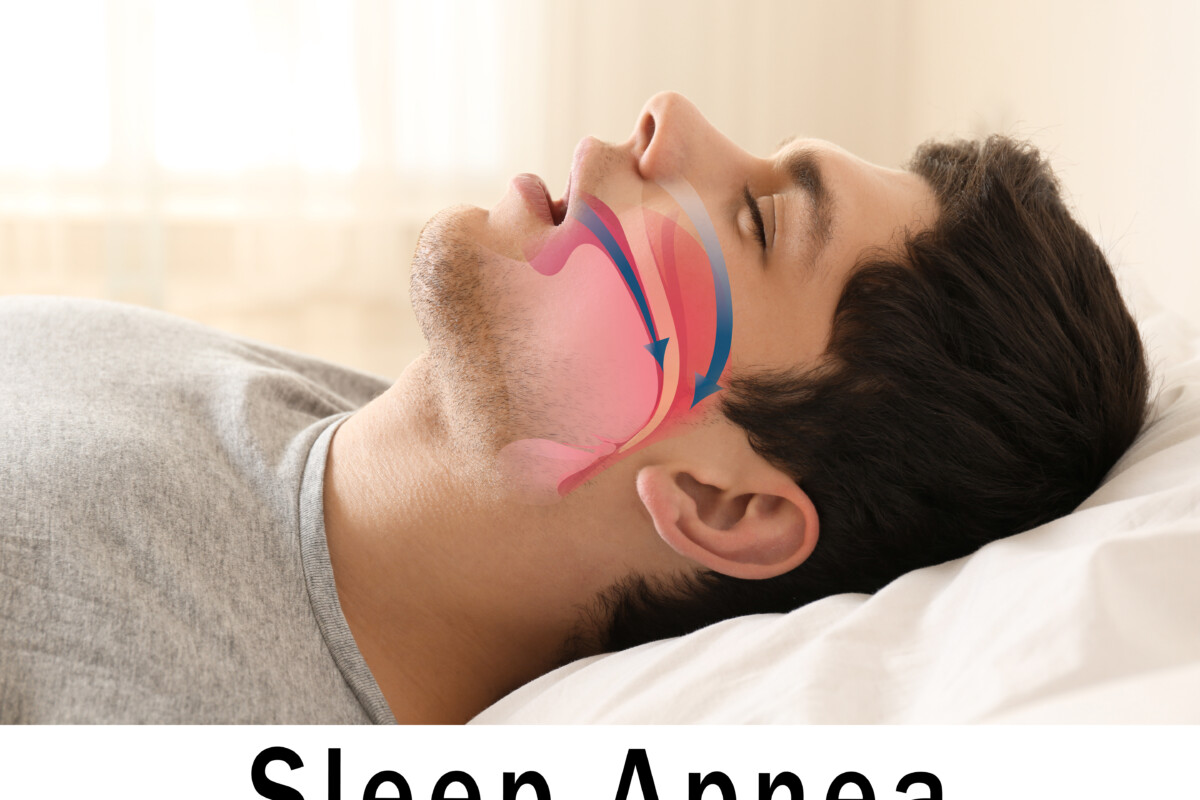Sleepless Nights with Obstructive Sleep Apnea

If you have trouble staying awake during the day, or if family members complain about how loudly you snore, you may have a sleep disorder known as Obstructive Sleep Apnea (OSA). This condition is found in 2-5% of women and 3-7% of men in the US.
People with OSA have an obstruction or blockage in the throat that periodically blocks their airways while they are sleeping. This causes an interruption in breathing known as apnea. (When apnea is caused by an obstruction it is known as Obstructive Sleep Apnea.)
OSA is extremely common and, unfortunately, most cases are never diagnosed. If OSA is left untreated it can increase the risk of heart disease, diabetes and other metabolic disorders. It can lead to car accidents (when people dose off while driving), memory loss, depression, anxiety and an inability to concentrate. It is associated with a higher risk of sudden death during sleep, stroke and death by all causes. The Epidemiology of Adult Obstructive Sleep Apnea – PMC (nih.gov)
The most common cause of OSA is a collapse or relaxing of the throat muscles at night. Men are as twice as likely as women to suffer from it and age and obesity both increase the risk of OSA.
Diagnosing OSA is not difficult, but it usually involves a sleep study. During a sleep study, monitors are put on the patient and left there while the patient sleeps. These monitors can measure breathing and oxygen levels, as well as how much the patient tosses and turns at night. They also measure brain waves, heart rate and eye movements. A sleep study measures how deeply the patient is sleeping and how often apnea causes the patient to wake up. Sleep studies can be done either in a sleep lab or at home, depending on the situation and insurance.
There is no actual cure for OSA, although research is ongoing. Once a patient is diagnosed with OSA, it’s important to get treatment to manage the condition. While some medications exist, they are not the most effective means of treatment.
In most cases, OSA patients are given a device that helps put pressure on their airways while they are sleeping. The pressure helps to keep the airways open, which allows the patient to breathe freely. This treatment is simple and effective.
There are several types of air pressure devices, but the most common is a CPAP or Continuous Positive Air Pressure device. The CPAP sits at the patient’s bedside. It has a hose attached to a mask that the patient wears when sleeping. The CPAP pushes air through the hose and mask and into the nose, or mouth and nose, of the patient. Most CPAPs have the ability to monitor how well the machine is working and how often it is being used. Newer CPAPS often have the ability to transfer this data remotely, so that a healthcare provider can monitor treatment.
After getting a CPAP or other air pressure device, the patient will need annual checkups. Repeat sleep studies may eventually be needed as well.
